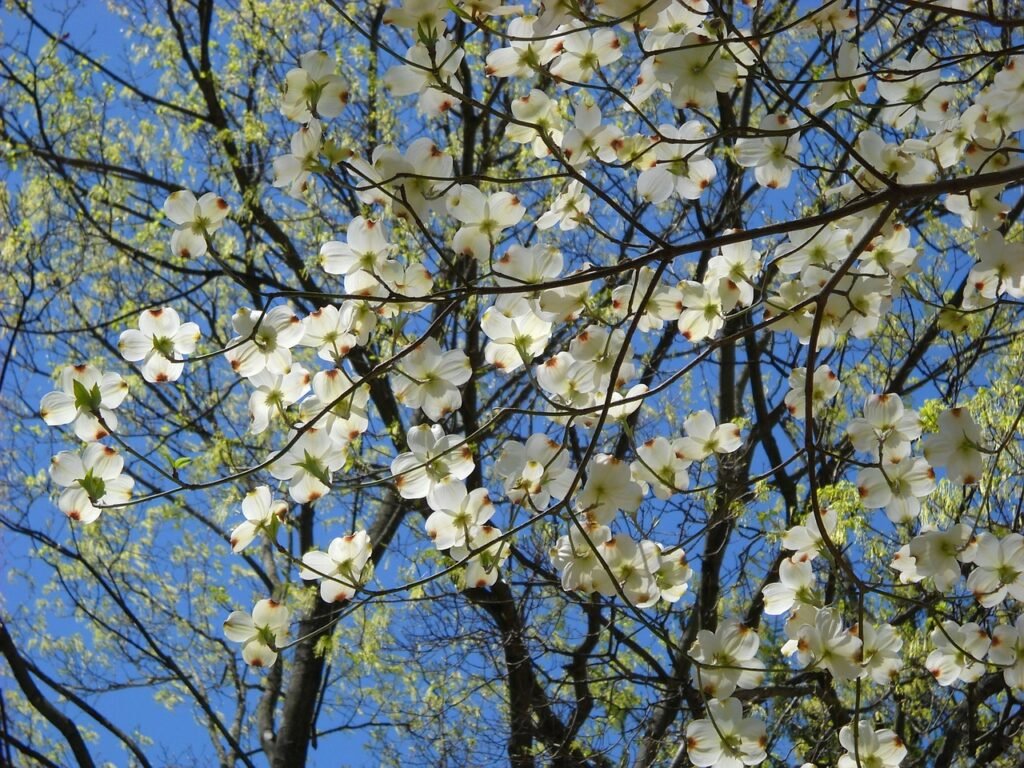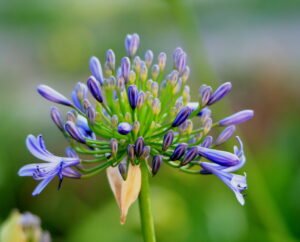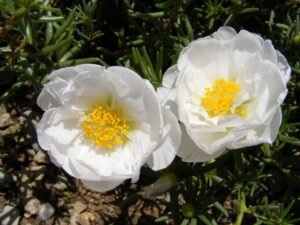How To Plant, Grow, And Care For Dogwood Tree

Dogwood Tree - Cornus florida
The flowering dogwood tree is know for their delicate blossoms and vibrant foliage. Scientifically known as Cornus florida it is a species of flowering plants in Cornaceae family native to eastern North America and northern Mexico. When it comes to adding beauty and charm to your landscape, few trees can compare to the dogwood tree. This article explains in detail how to plant, grow, and care for flowering dogwood tree.

One of the main reasons why dogwood trees are so popular is their stunning appearance. In the spring, they burst into bloom with clusters of colorful flowers in shades of white, pink, and red. These blossoms create a breathtaking display that can instantly elevate the look of any garden or yard.
Facts About Dogwood Tree
There are several different varieties of dogwood trees, each with its own unique features. The most common types include:
- Flowering Dogwood (Cornus florida): This is the most well-known variety, famous for its showy white or pink flowers that bloom in the spring.
- Kousa Dogwood (Cornus kousa): Native to Japan and Korea, this variety has smaller flowers that bloom later in the spring. It also produces edible fruit.
- Pacific Dogwood (Cornus nuttallii): Found in the western parts of North America, this variety has large white flowers and is the state tree of California.
- Red Dogwood (Cornus florida rubra): As the name suggests, this variety features beautiful pink or reddish flowers.
In addition to their flowers, some dogwood trees also produce fruit. The kousa dogwood, for example, produces small, round fruits that resemble raspberries. These fruits are not only visually appealing but are also edible and can be used in various culinary creations.
While dogwood trees are known for their spring flowers, they also offer a stunning display of fall foliage. As the weather turns cooler, the leaves of many dogwood varieties change color, transforming into vibrant shades of red, orange, and purple. This makes them a popular choice for adding autumnal beauty to any landscape.
Dogwood trees come in various sizes, ranging from small shrubs to medium-sized trees. The size and growth rate depend on the specific variety and environmental conditions. On average, dogwood trees can reach a height of about 20 to 30 feet, with a spread of 25 to 30 feet.
It’s important to note that dogwood trees have a shallow root system, so they prefer well-drained soil. They are also sensitive to drought and extreme heat, so it’s crucial to provide them with adequate water and protection from harsh conditions.
Dogwood trees hold great symbolism and cultural significance in various parts of the world. In Christianity, for example, the dogwood tree is believed to have been the wood used to construct the cross on which Jesus was crucified. The tree’s flowers symbolize the crucifixion, with the four petals representing the four corners of the cross and the red spots symbolizing the blood of Christ.
In Native American cultures, the dogwood tree is associated with fertility and protection. The bark and roots of the tree were used for medicinal purposes, and the branches were used in ceremonies and rituals.
FAQ About Dogwood Tree
When do dogwood trees bloom?
Dogwood trees typically bloom in the spring, usually between April and May. The exact timing can vary depending on the climate and the specific species of dogwood. The flowers of the flowering dogwood are usually white or pink, while the Kousa dogwood produces creamy white flowers.
When to plant dogwood trees?
The ideal time to plant dogwood trees is during the dormant season, which is typically in late fall or early spring. Planting during this time allows the tree to establish its roots before the hot summer months or the freezing temperatures of winter. It is important to avoid planting during extreme weather conditions, such as heatwaves or frosty periods, as this can stress the tree and hinder its growth.
How fast do dogwood trees grow?
On average, dogwood trees can grow anywhere from 1 to 2 feet per year. Some dogwood trees may experience slower growth initially but pick up speed as they mature, while others may have a consistent growth rate throughout their lifespan.
It’s also worth mentioning that dogwood trees are considered to be slow to medium growers. This means that while they may not grow as fast as some other tree species, they still offer a relatively manageable growth rate that allows for easy maintenance and shaping.
How big do dogwood trees get?
On average, flowering dogwood trees reach a height of 20 to 35 feet (6 to 10.5 meters) and have a spread of 25 to 30 feet (7.5 to 9 meters). However, some exceptional specimens can grow taller and wider under optimal growing conditions.
When is dogwood winter?
Dogwood Winter is a term used to describe a brief period of colder weather that often occurs in the spring, specifically during the blooming season of dogwood trees. This weather phenomenon is most commonly experienced in the southeastern United States, where dogwood trees are prevalent.
The exact timing of Dogwood Winter can vary from year to year and from region to region. However, it generally takes place in the late spring, typically between late April and early May. During this time, temperatures can drop significantly, causing a temporary return of winter-like conditions.
Right Location For Dogwood Tree
Before you start planting your dogwood tree, it’s important to choose the right location. Dogwoods thrive in well-drained soil and prefer partial shade, although they can tolerate full sun in cooler climates. Here are a few factors to consider when selecting a spot for your dogwood:
- Soil: Dogwoods prefer slightly acidic soil with a pH between 5.5 and 6.5. You can adjust your soil with organic matter, like compost or peat moss, if it’s too alkaline.
- Sunlight: While dogwoods prefer partial shade, they can tolerate full sun in cooler climates. If you live in a hot region, it’s best to provide some afternoon shade to protect the tree from scorching.
- Space: Make sure you have enough space for the dogwood tree to grow. Dogwoods can reach a height of 20-30 feet and spread out to a similar width.
How To Plant Dogwood Tree
Now that you’ve chosen the perfect location, it’s time to plant your dogwood tree. Follow these steps to ensure a successful planting:
- Prepare the soil: Dig a hole that is twice as wide and just as deep as the root ball of the tree. Loosen the soil in the hole and remove any weeds or grass.
- Place the tree: Gently place the tree in the hole, making sure that the top of the root ball is level with or slightly above the ground.
- Backfill the hole: Fill the hole with soil and carefully compact it around the roots. Avoid compacting the soil too much, as this can prevent proper drainage.
- Water thoroughly: After planting, water the tree thoroughly to settle the soil and remove any air pockets. Keep the soil consistently moist, but not waterlogged, during the first year of growth.
- Mulch: Apply a layer of mulch around the base of the tree, leaving a few inches of space around the trunk. This will inhibit the growth of weeds and help preserve moisture.
How To Care For Dogwood Tree
Once your dogwood tree is planted, it’s important to provide the proper care to ensure its health and vitality. Here are some tips for caring for your dogwood:
Watering
Watering is crucial for the establishment and growth of a dogwood tree, especially during the first year. Here are some watering guidelines:
- Regular watering: Water the tree deeply once a week, providing enough water to moisten the soil to a depth of at least 6 inches.
- Monitor soil moisture: Check the soil moisture regularly by inserting your finger into the soil. Water it if it seems dry at a depth of two to three inches.
- Avoid overwatering: While it’s important to keep the soil consistently moist, overwatering can lead to root rot and other diseases. Make sure there is adequate drainage in the soil and steer clear of wet circumstances.
Fertilizing
Fertilizing can help promote healthy growth and vibrant foliage in your dogwood tree. Here are some tips for fertilizing:
- Timing: Apply a balanced slow-release fertilizer in early spring, just before the tree starts to leaf out. Avoid fertilizing in late summer or fall, as this can stimulate new growth that may be damaged by winter frost.
- Follow instructions: Read the instructions on the fertilizer package carefully and apply the recommended amount for the size of your tree.
- Avoid over-fertilizing: Too much fertilizer can burn the roots and damage the tree. Follow the recommended dosage and avoid applying fertilizer directly to the trunk.
Pruning
Pruning is important for maintaining the shape and health of your dogwood tree. Here are some tips for pruning:
- Timing: Prune your dogwood tree in late winter or early spring, before new growth begins. This will allow the tree to heal quickly and minimize the risk of disease.
- Remove dead or diseased branches: Use clean, sharp pruning shears to remove any dead, damaged, or diseased branches. Don’t leave any stubs as you make precise cuts right above the branch collar.
- Thin out crowded branches: If your dogwood tree has dense growth, you can selectively remove some branches to improve air circulation and sunlight penetration.
Pest and Disease Control
While dogwood trees are generally resistant to pests and diseases, they can occasionally be affected. Here are some common issues to watch out for:
- Anthracnose: This fungal disease can cause leaf spots, twig dieback, and cankers. To prevent anthracnose, make sure your tree is planted in a well-drained location and avoid overhead watering.
- Powdery mildew: Powdery mildew can cause a white powdery coating on the leaves and stems. To prevent powdery mildew, ensure good air circulation around the tree and avoid overhead watering.
- Aphids: These small insects can cluster on the undersides of leaves and suck sap from the tree. Use insecticidal soap or a strong jet of water to control aphid infestations.
By following these guidelines, you can successfully plant, grow, and care for a dogwood tree in your garden or landscape. Remember to choose the right location, provide proper watering and fertilization, and address any pest or disease issues promptly. With its beautiful flowers and foliage, the dogwood tree will surely be a stunning addition to your outdoor space.





